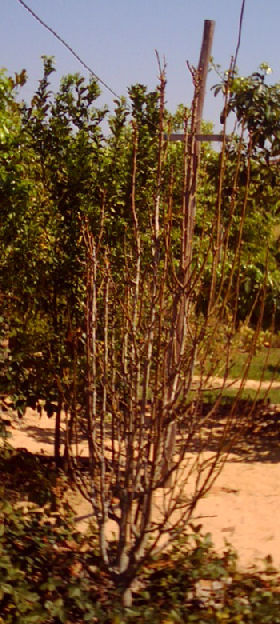

Pyrus communis (Pear Tree)
The deciduous tree from the genus Pyrus and the family Rosaceae shows itself depending on the rootstock, cultivar and cut in very different growth forms and reachs growth heights of between 10 to 67 feet. Classic pear trees show egg or pear shaped crows. The bark is gray-brown and pulls in large dandruffs or fields. The bark of the branches is initally shiny brown and later gray-brown. They may be depending on the variety with thorns or thornless.
The egg-shaped to elliptic leaves are 2 to 3.2 inches long and 1.2 to 3.2 inches wide. They are arranged alternate and the leaf stalks are usually between 1.6 and 3.2 inches long . The leaf margin is finely serrated or notched, the lower half of leaf is often entire. The leathery leaves are hairy at first and later bare. Its color is glossy dark green. In the fall they take on a yellow to orange-red color.
The bad-smelling flowers stand together in cluster inflorescences. The bisexual, radially symmetric, fivefold flowers have a diameter of 0.8 to 1.2 inches. The five white petals are about 0.8 inches long. The anthers are usually red. Flowering time is April and May in Europe and North America depending on variety. The flowers are pollinated by insects and are rarely self-fertile. The fruits are ripe to pick from July to October. The edible apple fruit, with typical pear shape, is 2 to 6.4 inches long. They are juicy and sweet.
Also in Southern Brazil pears are grown. Even in the frost-free climate the pear still thrives, even throws the foliage in winter, the leaf fall seems to be depend on the length of day. We have a specimen in our garden.

Our pear tree in Brazil in September 2008.

Close-up view of the branches of the pear tree in September 2008.
Back to the Agricultural Plant List
Created by Joachim Jaeck on December 1st, 2009